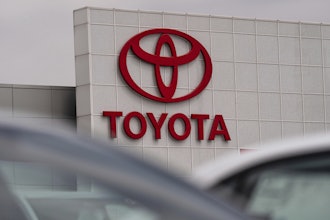By MIKE RAINONE, Co-Founder of PCDworks
In December, I wrote about some of the tribulations with the start up of Active Water Sciences, LLC, one of PCD's affiliated companies that has the sad misfortune of having me as its CEO. At this point, it might be interesting to catch up on what has happened, with the aim of allowing you to learn from my many mistakes.
Late last year, we began working twelve hours a day, seven days a week, to produce the first two units of our new product, a revolutionary wastewater treatment system. Six units in all had been purchased by the military and two were due to be shipped to Afghanistan in mid-January. Housed in 20-foot shipping containers, each unit was destined for a separate Forward Operating Base (FOB), and could serve a base of about 600 service personnel.
The overall architecture for this technology is comprised of three 20-foot shipping containers. One container houses a control unit, which consists of the computer; a fermentor for the bacteria (the key to the operation of the system); a generator and filter.
A second container holds the treatment unit, the heart of the system. The treatment unit consists of two large tanks of membrane bioreactors and a primary sedimentation tank. Finally, there is a buffer unit which houses two tanks, one for surge acceptance and one for equalization which provides a steady stream of wastewater to the treatment unit.
So, over a six-week period, we “quickly” designed and built two such systems. While we didn't make our mid-January deadline, our distributor, who had anticipated how awkward we would be in building these units from scratch, moved the deadline to the end of the month and we were able to ship in time to meet the new deadline.
I’m proud to say we have moved from a perfectly functioning operational prototype, which met or exceeded every expectation, to a very polished, professional, robust and over-engineered production unit.
Lesson #1: Never tell your staff the real deadline. In this case, lying is a good thing, because all work will expand to fill the allotted time.
Despite what I just said, our story isn’t really a tale about engineers running amok. Our story involves engineers worrying about the future. Here’s the scenario: our units are headed to Afghanistan — a Maytag repair man can’t just zip over to your FOB to fix giant wastewater processing units, at least not without an armed convoy tagging along. We certainly can't just send our guys over there every time something needs a tweak or a whack to start operating properly again. So, we’ve had to try and imagine every possible scenario of failure, sabotage, stupidity or bungling.
Compounding this is the fact that our product will be on display to every environmental officer in the U.S. armed forces, NATO, the U.N., and nearly every other disaster relief group on the planet. While we believe our unit is unsurpassed, and that there is nothing out there that could perform nearly as well, the rest of the world is looking for proof. Everyone is aware that failure is not an option at this juncture. Given all these inducements to perfection, engineers can and will run amok — and you can't do a darn thing to stop it.
Lesson #2: At a minimum, try to avoid a situation in which your engineers are actually doing the building. They will look to the ends of the earth for ways to improve the design, on-the-fly, just because it's good to make something better, regardless of the cost, especially if they have wrenches in their hands. When engineers are doing the building, there is no way to contain your labor costs, nor your medical costs for missing fingers.
Given the $800,000 price tag for the two units, one can appreciate the importance of having a terrific banker lined up to help even out the potholes in the cash flow regulation. Unfortunately, that terrific banker relationship I bragged about in December column fell through. After sitting on our loan request for nearly two months, he came back with a lame story about the bank deciding 2010 was going to be a bad year, which meant they were not going to lend any money — thus paving the way for a bad year. An interesting tautology, no?
Our primary lender’s cowardice was saved by three things. First, our customer put up a sizable down payment for every unit, which was appropriate and very helpful. Next, the local economic development foundation put up a substantial loan, with the requirement that we actually remain in the area and employ a certain number of people for the duration of the loan. Finally, our university partner’s bank, treasuring the $200 million or so dollars that the university runs through the bank every year, granted us a substantial line of credit.
Lesson #3: Never trust a banker, no matter how long you've known him. Also, set a deadline for reply to your loan request; move on if he misses it. Don't feel bad about hurting a banker’s feelings, since you know darn well he won’t feel bad about hurting yours.
The toughest lesson of all is that, at some point, you have to let go of your baby and just get it out the door. It will not be perfect. It will have some flaws, you know you can do better. You’re losing some sleep over something you know must be fixed and just can't put your finger on it. Oh, and the fact that this is the first time this technology is going to be tested in the real world, every person that can make a difference in your future is going to be looking at it, judging it and it all makes that first launch exponentially tougher.
Maybe every aspect of launching any new business is like that. Maybe you can never have enough money, and maybe you're always uncertain about whether you're making the right decisions about people, technology, design, legal issues and the like. Somehow, though, you soldier through, making the best decisions you can, pushing forward.
Lesson #4: You must eventually trust your design, trust your engineering and trust that your Failure Modes & Effects Analysis (FMEA) process has brought your product up to the best standard possible before you launch — but launch you must.
Despite all of the trials mentioned above, the final lesson is that it is all worth the effort. Once your first product is shipped, orders are coming in and you’ve done it on your own, it all becomes clear.
The best part? You don't have to put up with some leisure suit Larry MBA marketing director spending your money on a new BMW and asking, “Where's my expense check?”
Mike Rainone is the co-founder of PCDworks, a technology development firm specializing in breakthrough product innovation. Contact him at [email protected] and visit www.pcdworks.com.


















